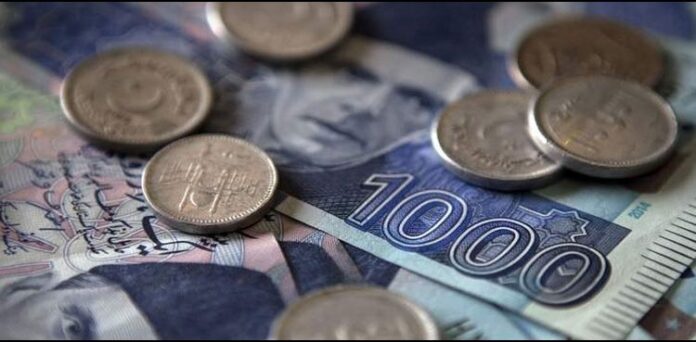- Deficit in PTI govt’s first year was worse than the last years of PPP and PML-N govts
- Debt servicing and defence expenditure consumed Rs3.23tr or 80pc of the total govt revenues
Owing to the government’s failure to enhance revenues and control expenditures during its first year in power, the public finances further deteriorated with the budget deficit rising to a record Rs3.45 trillion or 8.9pc of the size of the nation’s economy.
The official figures released by the Ministry of Finance on Tuesday confirmed that the PTI government smashed its budget deficit target by 82pc, as the budget deficit target for FY19 was just Rs1.9 trillion.
According to a private media report, the 8.9pc of GDP deficit was the highest in the past eight years in terms of the size of the national economy. In absolute terms, it was the highest-ever deficit, which broke last year’s record of Rs2.3 trillion.
The disappointing results have made the budget 2019-20 irrelevant within two months of its approval by the National Assembly. The results have also put a serious question mark over the PTI government’s ability to deliver on the $6 billion agreement with the International Monetary Fund (IMF).
The budget deficit in the first year of the PTI government was worse than the last years of the Pakistan People’s Party (PPP) and Pakistan Muslim League-Nawaz (PML-N) governments. Traditionally, the governments tend to spend more in their last year in power compared with the first year that has historically remained the year of consolidation.
In the second last year of the PPP (2011-12), the budget deficit was equal to 8.8pc of GDP that came down to 8.2pc of GDP in its last year. The PML-N closed its account at a budget deficit of 6.6pc of GDP in the fiscal year 2017-18.
According to the finance ministry, the federal government spent 20pc more than the last year but its total revenues were 6pc less than the preceding year. The debt and defence spending consumed Rs3.23 trillion or 80pc of the total federal government revenues.
The overall expenditures of federal and provincial governments stood at Rs8.34 trillion in the last fiscal year – higher by Rs857 billion or 11.5pc. Compared with this, the total revenues stood at just Rs4.9 trillion – Rs328 billion or 6.2pc less than the previous fiscal year.
After excluding provinces shares of Rs2.4 trillion in federal revenues, the debt and defence spending amounted to 159pc of the federal government’s net revenues of just Rs2 trillion.
It is pertinent to mention that under the three-year IMF bailout programme, Pakistan has committed to converting the primary deficit into a surplus. For this fiscal year, the government is legally bound to bring down the primary deficit – calculated by excluding interest payments, to 0.6pc of GDP – down from last fiscal year’s level of 3.5pc. This will require massive efforts to enhance tax revenues and cut non-interest expenditures.
The troubling factor was the steep reduction in tax revenues, including that of the FBR, in terms of size of the economy. Against the preceding year’s 15.2pc of GDP revenues, the ratio slipped to just 12.7pc at the end of the first year of the PTI government.
The FBR’s tax revenues that stood at 11.2pc of GDP in the last year of the PML-N government, dropped to 9.9pc of GDP in PTI’s first year. The main reason was the FBR’s failure to achieve its Rs4.4 trillion annual tax collection target. The FBR’s collection stood at Rs3.829 trillion – Rs13 billion less than the collection of the PML-N government.




